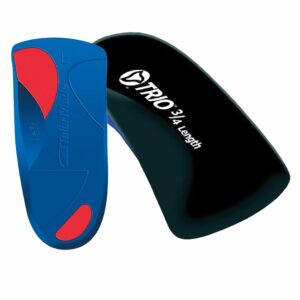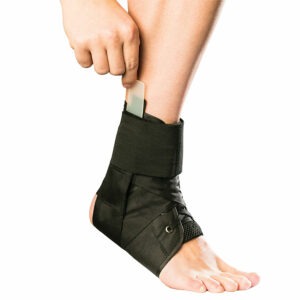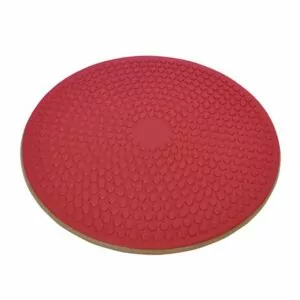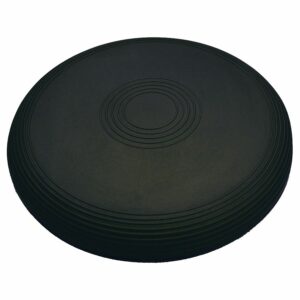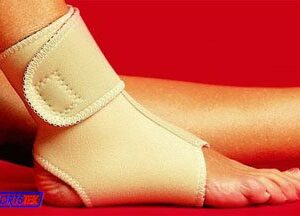Ankle Sprain (Medial Ligament)
Updated:
(Also known as Deltoid Ligament Sprain, Medial Ligament Sprain)
N.B. The term ‘ankle sprain’ will be used in this document to describe the injury known as a medial ligament sprain of the ankle.
What is an ankle sprain?
An ankle sprain is a condition characterised by damage and tearing to the soft tissue and ligaments of the ankle.
A ligament is a strong band of connective tissue which attaches bone to bone. The medial ligament of the ankle (also known as the deltoid ligament) comprises of strong connective tissue which joins the tibia (shin bone) to several small bones located in the inner ankle region (figure 1).
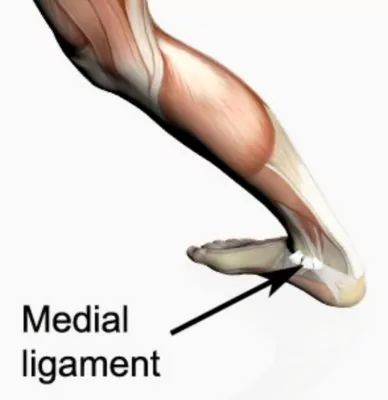
Figure 1 – Relevant Anatomy for a Medial Ligament of the Ankle Sprain
The medial ligament acts to prevent the foot and ankle from turning outwards excessively (eversion – figure 2). When this movement is excessive and beyond what the ligament can withstand, tearing to the ligament occurs. This is known as a medial ligament ankle sprain and may range from a small partial tear resulting in minimal pain, to a complete rupture resulting in significant pain and disability.
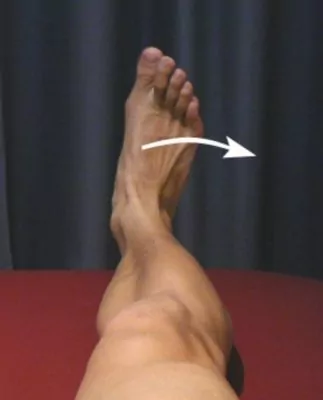
Figure 2 – Ankle Eversion
Causes of an ankle sprain
An ankle sprain involving the medial ligament most commonly occurs during weight bearing activities requiring rapid changes in direction, especially on uneven surfaces. These typically occur in basketball, football, volleyball and netball. The usual mechanism of injury is extreme eversion (outward turning of the ankle – figure 2) during weightbearing.
Signs and symptoms of an ankle sprain
Patient with this condition may notice an audible snap or tearing sound at the time of injury, with subsequent pain and swelling at the inner aspect of the ankle. The patient may be unable to weight bear at the time of injury due to pain and may develop bruising and stiffness over the coming days.
Diagnosis of an ankle sprain
A thorough subjective and objective examination from a physiotherapist is usually sufficient to diagnose an ankle sprain involving the medial ligament of the ankle. Investigations such as an X-ray, MRI or CT scan are often required to confirm diagnosis and rule out other injuries (particularly fractures)
Treatment for an ankle sprain
Most patients with a medial ligament ankle sprain heal well with appropriate physiotherapy. The success rate of treatment is largely dictated by patient compliance. One of the key components of treatment is that the patient allows their body to heal naturally by avoiding activities that further damage the affected tissue. The patient can determine if an activity damages or aggravates their condition based on their symptoms. Generally an activity aggravates the condition if:
- Pain increases during that activity OR
- Pain increases upon rest following that activity OR
- Pain increases the morning after that activity.
It is therefore vital that the patient rests from any activity that increases their pain during activity, after activity or the following morning.
Appropriate treatment in the first 48 – 72 hours is vital to reduce bleeding, swelling and inflammation. This should involve following the R.I.C.E regime which comprises of rest from aggravating activity (crutches or an Ankle Brace are often required), regular icing, the use of a compression bandage and elevation of the affected limb. Anti-inflammatory medication may also be particularly useful in this early phase.
It is also important for patients to perform pain-free flexibility, strength and balance exercises early in the rehabilitation process to prevent stiffness, weakness and instability from developing and to ensure the ankle is functioning correctly. These exercises should be implemented as soon as pain allows and under guidance by the treating physiotherapist. A gradual return to activity should occur once the patient is pain-free, provided symptoms do not increase.
Prognosis of an ankle sprain
In cases of a minor to moderate medial ligament ankle sprain (grades I and II), return to sport or normal activity can usually occur in 3 – 8 weeks with appropriate management. Patients with more severe injuries (e.g. a complete rupture – grade III) will require a longer period of rehabilitation to gain optimum function.
Physiotherapy for an ankle sprain
Physiotherapy treatment is vital for all patients with an ankle sprain and can hasten the healing process, reduce the likelihood of recurrence and ensure an optimal outcome. Treatment may comprise:
- soft tissue massage
- electrotherapy (e.g. ultrasound)
- anti-inflammatory advice
- joint mobilization
- ankle taping
- ankle bracing
- ice or heat treatment
- exercises to improve flexibility, strength and balance
- education
- activity modification advice
- prescription of crutches
- biomechanical correction
- the use of heel wedges
- a gradual return to activity program
Other intervention for an ankle sprain
Despite appropriate physiotherapy management, a small percentage of patients with a medial ligament ankle sprain do not improve adequately. When this occurs the treating physiotherapist or doctor can advise on the best course of management. This may involve investigations such as an X-ray, CT scan or MRI or review with a specialist who can advise on any procedures that may be appropriate to improve the condition. Surgical reconstruction of the medial ligament is occasionally required when all conservative measures fail.
Exercises for an ankle sprain
The following exercises are commonly prescribed to patients with an ankle sprain. You should discuss the suitability of these exercises with your physiotherapist prior to beginning them. Generally, they should be performed 3 times daily and only provided they do not cause or increase symptoms.
Foot and Ankle Up and Down
Move your foot and ankle up and down as far as possible and comfortable without pain (figure 3). Repeat 10 – 20 times.
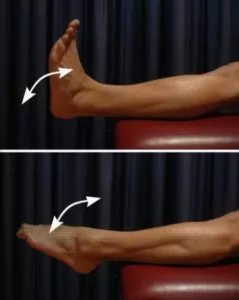
Figure 3 – Foot and Ankle Up and Down (left leg)
Foot and Ankle In and Out
Move your foot and ankle in and out as far as possible and comfortable without pain (figure 4). Repeat 10 -20 times.
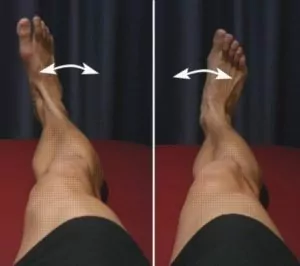
Figure 4 – Foot and Ankle In and Out (right leg)
Lunge Stretch
With your hands against the wall, place your leg to be stretched in front of you as demonstrated (figure 5). Keep your heel down. Gently move your knee forward over your toes as far as possible and comfortable without pain. Hold for 5 seconds and repeat 10 times at a mild to moderate stretch pain-free.
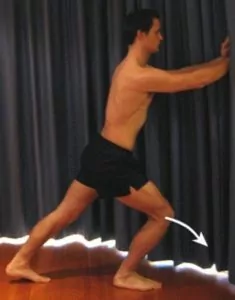
Figure 5 – Lunge Stretch (right leg)
Find a Physio for an ankle sprain
Find a Physiotherapist in your local area who can treat an ankle sprain.
Physiotherapy products for an ankle sprain
Some of the most commonly recommended products by physiotherapist to hasten healing and speed recovery in patients with this condition include:
To purchase physiotherapy products for an ankle sprain click on one of the above links or visit the PhysioAdvisor Shop.
More information
- View more Ankle Stretches.
- View Ankle Strengthening Exercises.
- View Balance Exercises.
- View Ankle Taping Techniques.
- View our Ankle Diagnosis Guide.

Link to this Page
If you would like to link to this article on your website, simply copy the code below and add it to your page:
<a href="https://physioadvisor.com.au/injuries/ankle/ankle-sprain-medial-ligament”>Ankle Sprain (Medial Ligament) – PhysioAdvisor.com</a><br/>PhysioAdvisor offers detailed physiotherapy information on a Medial Ligament Ankle Sprain including: symptoms, diagnosis, treatment, exercises & more...
Return to the top of Ankle Sprain (Medial Ligament).

